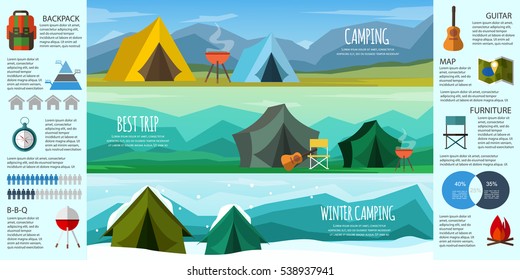Wintertime camping is an enjoyable and adventurous experience, yet it requires proper equipment to guarantee you stay warm. You'll require a close-fitting base layer to trap your temperature, together with a protecting coat and a water resistant shell.
You'll additionally need snow stakes (or deadman supports) hidden in the snow. These can be tied utilizing Bob's brilliant knot or a regular taut-line drawback.
Pitch Your Outdoor tents
Winter camping can be an enjoyable and daring experience. Nonetheless, it is necessary to have the appropriate equipment and understand just how to pitch your tent in snow. This will protect against cold injuries like frostbite and hypothermia. It is also crucial to consume well and remain hydrated.
When setting up camp, ensure to select a site that is sheltered from the wind and without avalanche danger. It is likewise a great concept to load down the location around your tent, as this will help in reducing sinking from temperature.
Before you set up your outdoor tents, dig pits with the same size as each of the anchor points (groundsheet rings and man lines) in the center of the camping tent. Load these pits with sand, rocks or even things sacks loaded with snow to compact and protect the ground. You might likewise want to consider a dead-man support, which includes connecting tent lines to sticks of timber that are buried in the snow.
Pack Down the Area Around Your Tent
Although not a need in a lot of areas, snow risks (likewise called deadman anchors) are an excellent enhancement to your camping tent pitching kit when outdoor camping in deep or pressed snow. They are essentially sticks that are designed to be hidden in the snow, where they will freeze and develop a strong support point. For best outcomes, utilize a clover hitch knot on the top of the stick and hide it in a few inches of snow or sand.
Establish Your Camping tent
If you're camping in snow, it is a good concept to use an outdoor tents created for winter season backpacking. 3-season outdoors tents work great if you are making camp below tree line and not anticipating especially tent ventilation extreme weather, yet 4-season camping tents have sturdier posts and materials and offer even more protection from wind and hefty snowfall.
Be sure to bring ample insulation for your sleeping bag and a cozy, dry blow up mat to sleep on. Blow up mats are much warmer than foam and assistance prevent chilly places in your camping tent. You can also include an extra mat for sitting or cooking.
It's additionally a great concept to set up your outdoor tents near to an all-natural wind block, such as a group of trees. This will make your camp extra comfortable. If you can not find a windbreak, you can produce your own by excavating holes and hiding things, such as rocks, camping tent stakes, or "dead man" supports (old tent man lines) with a shovel.
Restrain Your Tent
Snow risks aren't necessary if you utilize the appropriate methods to secure your tent. Buried sticks (possibly gathered on your strategy hike) and ski poles function well, as does some version of a "deadman" hidden in the snow. (The concept is to create a support that is so strong you won't have the ability to pull it up, even with a great deal of initiative.) Some manufacturers make specialized dead-man anchors, however I favor the simplicity of a taut-line hitch connected to a stick and then buried in the snow.
Understand the surface around your camp, especially if there is avalanche danger. A branch that falls on your camping tent can harm it or, at worst, injure you. Also be wary of pitching your camping tent on an incline, which can catch wind and lead to collapse. A sheltered area with a reduced ridge or hillside is better than a steep gully.
